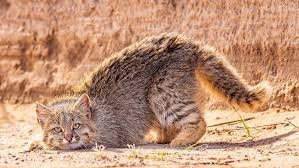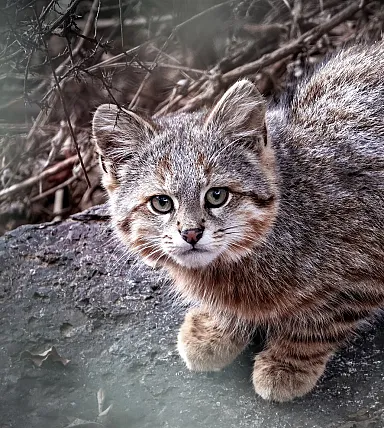
The Pampas cat, Leopardus colocolo (now recognized as a complex of several distinct species, one including L. colocolo, L. pajeros, and L. garleppi), is a small, elusive wild cat native to the grasslands, shrublands, and montane regions of South America, primarily across Argentina, Bolivia, Chile, Ecuador, Paraguay, Peru, and Uruguay. Its appearance varies significantly across its wide range, with coat colors from grizzled grey to reddish-brown, and patterns ranging from distinct spots and stripes to almost plain. It has a relatively small head, pointed ears, and a medium-length, bushy tail. While primarily nocturnal and solitary, Pampas cats are highly adaptable, occupying diverse habitats from sea level to over 5,000 meters in the Andes. They are agile hunters, preying mainly on small rodents, ground-dwelling birds, and insects, often ambushing their prey in dense vegetation.

The Pampas cat plays a vital ecological role as a mesopredator in the varied South American ecosystems it inhabits. By controlling populations of small mammals, particularly rodents, they help prevent overpopulation, which can impact local agriculture and lead to environmental degradation. Their presence is an important indicator of a healthy and balanced grassland or montane environment, reflecting the availability of prey and the integrity of their habitat. Given the increasing fragmentation and degradation of their habitats due to agricultural expansion, livestock grazing, and climate change, protecting the Pampas cat and its diverse Form is crucial. Conservation eeffortsare essential not only for the survival of this complex and adaptable feline, but also for the preservation of the unique biodiversity and ecological balance of the South American plains and mountains.
Every day, wild cats around the world face threats like habitat loss, poaching, and natural climate progression. But hope isn’t lost. With your support, we can protect these majestic animals and preserve their habitats.
Join our growing community of wildlife champions and help create a safer future for all 40 wild cat species.
Zoo-EV is a nonprofit organization dedicated to the protection and preservation of the world’s 40 wild cat species through education, community engagement, and conservation initiatives. Zoo-EV is recognized as a 501(c)(3) tax-exempt organization by the IRS, with the Employer Identification Number (EIN) 88-3636567.